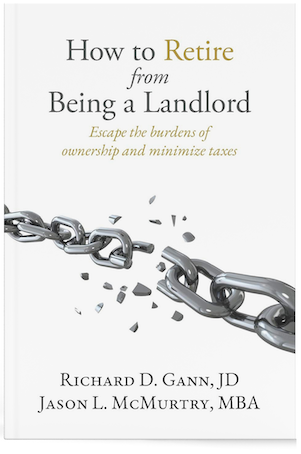
Do Higher Values Today Translate to Higher Returns Tomorrow?
Do Higher Values Today Translate to Higher Returns Tomorrow?
Investors have been scooping up commercial real estate in a hunt for yield, but are they getting what they bargained for? According to a recent Wall Street Journal article, investors purchased a record $193 billion in commercial real estate in the third quarter, reflecting a 19 percent gain compared with the same three months in 2019. Apartments, industrial properties and life-science labs got the lion’s share of the attention in the buying spree.
Reportedly this boom differs from previous cycles because a relatively large number of deals were for single properties, rather than institutional investors snapping up real-estate companies and portfolios with multiple properties.
The media rarely addresses why return-focused investors should be wary of such conditions. Indeed, higher prices may reduce current yields and, absent any further capitalization rate reduction or “cap rate compression”, a property with formulaic revenue may not appreciate at all.
Let us delve deeper into this economic phenomenon. Cap rates are the ratio of a property’s annual net operating income (NOI)—all rental income minus operating expenses such as taxes, insurance and utilities—to its current value or price. Generally, cap rates are indicative of property pricing and potential risk and are often compared to treasury rates. Put another way, average cap rates reflect the yields that buyers require from a given type of real estate at any given time.
Cap rate compression, then, refers to income ratios falling because a real estate market is rising. For example, suppose an investor purchased a property that is producing $400,000 in NOI for $5,000,000. The unlevered yield (cap rate) is 8.00%. If that same property sold a year later for $5,250,000 without any increase in NOI, we would say the property sold at a lower cap rate of 7.61% ($400,000/$5,250,000). The new buyer was willing to pay more for the same stream of income.
Since the Great Recession, commercial real estate cap rates drifted gradually downward and have hovered near cyclical low levels for the past couple of years—even throughout the pandemic. Strong tenant demand, fueled by the longest streak of economic growth on record and generally restrained levels of new property supply, drove rent increases and, therefore, NOI growth. At the same time, however, strong liquidity in a low interest rate environment sustained strong property price growth that has outpaced increases in rental revenues. This is particularly true for single-family residential rental properties on the coasts, where property values are decoupled from NOI due to owner-occupier demand.
Now may be the time to turn attention towards value-adding efforts that reduce reliance on cap rate compression to generate appreciation. Sectors like multifamily and self-storage offer more opportunities to raise revenues than long-term leased office or retail. Increasingly, NNN-leased investments represent a trade-off between consistency of income now and appreciation in the future. As you consider buying or exchanging into another property, ask yourself what is going to make this investment worth more in 10 years? If your only answer is “continued cap rate compression”, you may be setting yourself up for disappointment.
For more information about passive real estate investments, please call 1031 Capital Solutions at 1-800-445-5908 or visit our website, 1031capitalsolutions.com.
_____________________
This article is neither an offer to sell nor a solicitation of an offer to buy any security, which can only be made by prospectus. Investing in real estate and 1031 exchange replacement properties may not be suitable for all investors and may involve significant risks such as illiquidity, tenant vacancies, general market conditions and competition, lack of operating history, interest rate risks, the risk of new supply coming to market and softening rental rates, general risks of owning/operating commercial and multifamily properties, short term leases associated with multi-family properties, financing risks, potential adverse tax consequences, general economic risks, development risks, long hold periods, and potential loss of the entire investment principal.
Neither Richard D. Gann nor CIS or CAM provide tax or legal advice, as such advice can only be provided by a qualified tax or legal professional, who all investors should consult prior to making any investment decision.
Securities offered through Concorde Investment Services, LLC (CIS), member FINRA/SIPC. Advisory services offered through Concorde Asset Management, LLC (CAM), an SEC-registered investment adviser. 1031 Capital Solutions is independent of CIS and CAM.
continue reading
Related Posts
When the Federal Reserve (the Fed) adjusts its target interest […]
1031 Industry Veterans Launch Proprietary Software for Rental Housing Providers […]
When it comes to building and preserving generational wealth through […]











